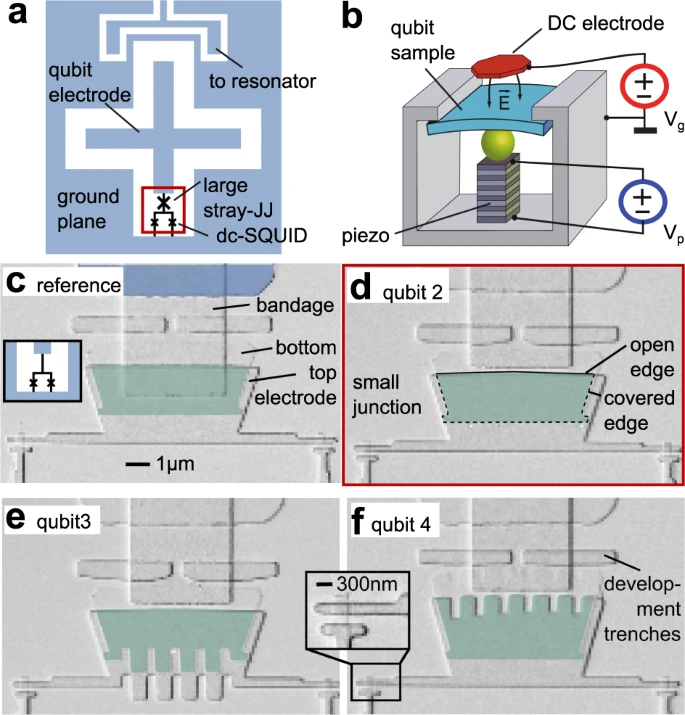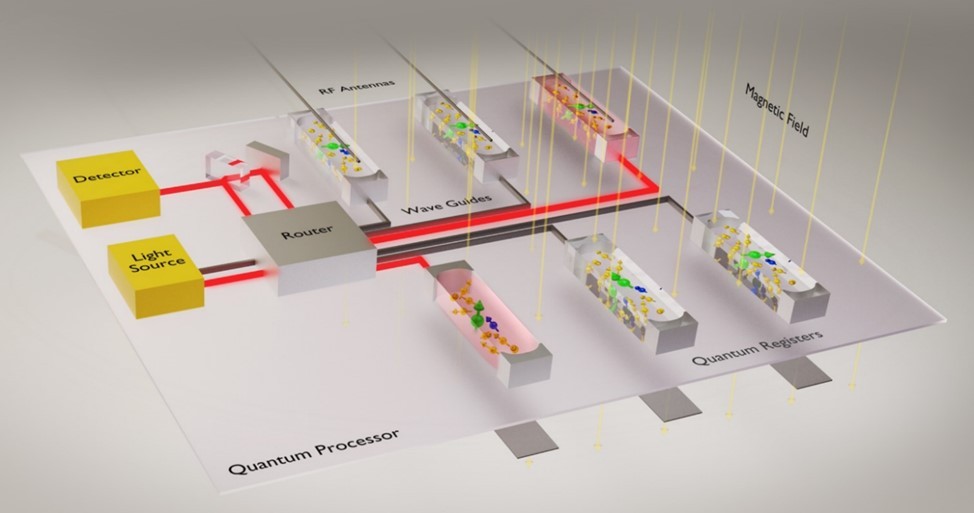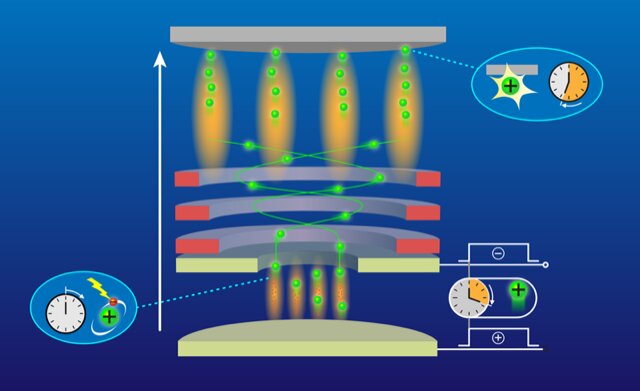Tunneling defects in disordered materials form spurious two-level systems which are a major source of decoherence for micro-fabricated quantum devices.
For superconducting qubits, defects in tunnel barriers of submicrometer-sized Josephson junctions couple strongest to the qubit, which necessitates optimization of the junction fabrication to mitigate defect formation.
Researchers investigated whether defects appear predominantly at the edges or deep within the amorphous tunnel barrier of a junction. For this, they compared defect densities in differently shaped Al/AlOx/Al Josephson junctions that are part of a Transmon qubit. They observed that the number of detectable junction-defects is proportional to the junction area, and does not significantly scale with the junction’s circumference, which proposes that defects are evenly distributed inside the tunnel barrier.
Moreover, they found very similar defect densities in thermally grown tunnel barriers that were formed either directly after the base electrode was deposited, or in a separate deposition step after removal of native oxide by Argon ion milling.
The paper has been published in npj Quantum Information.




